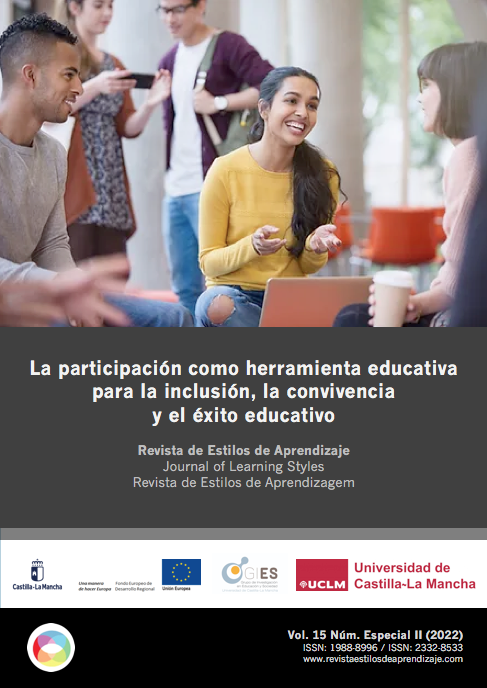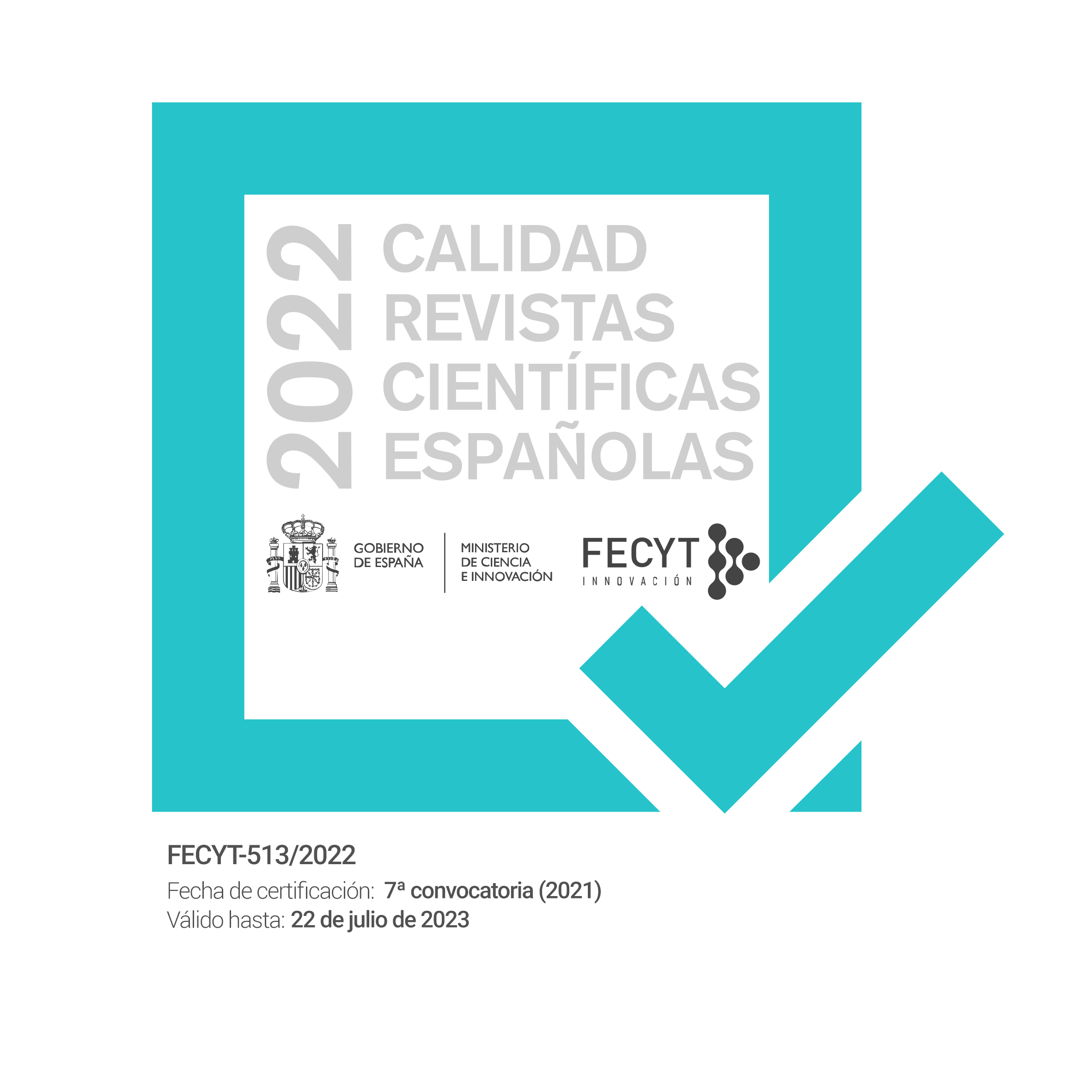The participation of Deaf families in Spanish schools: an exploratory study
DOI:
https://doi.org/10.55777/rea.v15iEspecialII.4648Keywords:
family participation, educational centers, Deaf people, communication barriers, sign languageAbstract
The participation of families in educational centers is essential for their correct functioning and for a comprehensive development of pupils. Family-school dialogue becomes a key element in achieving this educational co-responsibility. In the case of Deaf families, the use of a non-mainstream language can generate barriers that limit this participation. This study represents an approach to the reality experienced by these families in terms of educational participation, analyzing the form and degree of their involvement and the difficulties they face. For this purpose, a quantitative, non-experimental, cross-sectional, and exploratory research was carried out in which a questionnaire, previously adapted to sign language and validated by members of the Deaf community, was administered. The results obtained allow us to affirm that Deaf families know and have sufficient information about schools and educational agents, the processes of participation and the academic development of their children; however, the degree of involvement in (extra)curricular activities that involve social interaction with their hearing peers is minimal. It seems, therefore, that communication barriers are reproduced in the educational context and limit the full participation of Deaf people.
Downloads
References
Báez Montero, I. (2015). ¿De cuántos signantes estamos hablando? E-AESLA, (1). https://cvc.cervantes.es/lengua/eaesla/pdf/01/48.pdf
Bao Fente, M. (2012). La interpretación educativa: ¿Algo más que interpretar? Revista de la Fundación Canaria para el Sordo, (4). https://bit.ly/3ayoHlw
Cabeza-Pereiro, M. y Ramallo, F. F. (2016). Lenguas de signos y educación en España: Una aproximación desde la comunidad sorda. Language Problems and Language Planning, 40(1), 1-25. https://doi.org/10.1075/lplp.40.1.01cab
Calvo, M.; Verdugo, M. Á., y Amor, A. M. (2016). La participación familiar es un requisito imprescindible para una escuela inclusiva. Revista latinoamericana de educación inclusiva, 10(1), 99-113. http://www.rinace.net/rlei/numeros/vol10-num1/art4.pdf
Centro de Normalización Lingüística de la Lengua de Signos Española (2020). II Informe sobre la situación de la lengua de signos española. Real Patronato sobre Discapacidad, https://www.siis.net/documentos/ficha/561950.pdf
Confederación Estatal de Personas Sordas (2015). Guía Informativa para Personas Sordas Inmigrantes. 2.2.3. Accesibilidad: La supresión de las barreras de comunicación. https://bit.ly/3ywBXiC
Esteban, M. L., y Ramallo, F. (2019). Derechos lingüísticos y comunidad sorda: claves para entender la minorización. Revista de Estudios de Lenguas de Signos REVLES, (1), 20-52.
Fariña Díaz, N. y Rumeu, S. (2022). “Signándole a la infancia”: una metodología inclusiva en educación infantil. Revista de Estilos de Aprendizaje, 15(29), 76-88. http://revistaestilosdeaprendizaje.com/article/view/4023/4815
Fernández-Soneira, A. y Bao-Fente, M. C. (2021). ¿Qué supone ser sordo a nivel escolar? Reflexiones sobre educación inclusiva y bilingüe a partir del corpus CORALSE. Revista de Estilos de Aprendizaje, 14(27), 46-61. http://revistaestilosdeaprendizaje.com/article/view/2819/4089
García-Bacete, F. J. (2003). Las relaciones escuela-familia: un reto educativo. Infancia y Aprendizaje, 26(4), 425-437. http://dx.doi.org/10.1174/021037003322553824
García Gámez, M. D. C. y Gutiérrez Cáceres, R. (2013). Situación actual y uso de modalidades comunicativas en personas sordas. Educación y futuro digital, (6), 42-54. https://bit.ly/3AJmzlA
Gómez, M. R. (2012). Tendencia educativa bilingüe y bicultural para la educación del sordo: Un nuevo camino hacia la inclusión. Unirevista.es, (1), 76-86. http://hdl.handle.net/10272/6148
Hernández, R., Fernández, C. y Baptista, P. (2014). Metodología de la Investigación (6ª ed.). Mc Graw Hill.
Hernández-Sampieri, R. y Mendoza, C. (2018). Metodología de la investigación: Las rutas cuantitativa, cualitativa y mixta. Mc Graw Hill.
Ley 27/2007, de 23 de octubre, por la que se reconocen las lenguas de signos españolas y se regulan los medios de apoyo a la comunicación oral de las personas sordas, con discapacidad auditiva y sordociegas. Boletín Oficial del Estado, 255, de 24 de octubre de 2007. https://www.boe.es/eli/es/l/2007/10/23/27/con
Ley Orgánica 2/2006, de 3 de mayo, de Educación. Boletín Oficial del Estado, 106, de 4 de mayo de 2006. https://www.boe.es/eli/es/lo/2006/05/03/2/con
López, P. L. (2004). Población muestra y muestreo. Punto cero, 9(8), 69-74. http://www.scielo.org.bo/pdf/rpc/v09n08/v09n08a12.pdf
López-Márquez, N. G. (2017). Funcionalidad familiar y participación escolar de las familias de niños con discapacidad. IE Revista de Investigación Educativa de la REDIECH, 8(14), 111-128. https://bit.ly/3IsZGEU
Morales García, A. M. (2014). La Ciudadanía desde la Diferencia: Reflexiones en torno a la Comunidad Sorda. Revista Latinoamericana de Educación Inclusiva, 3(2), 125–141. http://www.rinace.net/rlei/numeros/vol3-num2/art8.pdf
Payà Rico, A. y Tormo Tormo, M. (2016). La participación educativa de las familias en una escuela pública valenciana: un estudio cualitativo. Foro de Educación, 14(21), 227-248. https://doi.org/10.14516/fde.2016.014.021.012
Pérez de la Fuente, O. (2016). Las personas sordas como minoría cultural y lingüística. Ilemata, 6(15), 267-287. https://www.dilemata.net/revista/index.php/dilemata/article/view/308/328
Quispe Limaylla, A. (2013). El uso de la encuesta en las ciencias sociales. Ediciones Díaz de Santos.
Santos, A. S., y Portes, A. J. F. (2019). Percepciones de sujetos sordos sobre la comunicación en la Atención Básica a la Salud. Revista Latinoamericana de Enfermagem, 27. https://doi.org/10.1590/1518-8345.2612.3127
Sanz, M. P. G., Vicente, M. Á. G., Prados, M. Á. H. y Martínez, J. P. (2010). La comunicación entre la familia y el centro educativo, desde la percepción de los padres y madres de los alumnos. Educatio siglo XXI, 28(1), 157-187. https://revistas.um.es/educatio/article/view/109771
Simón, C., Giné, C. y Echeita G. (2016). Escuela, familia y comunidad: construyendo alianzas para promover la inclusión. Revista latinoamericana de educación inclusiva, 10(1), 25-42. http://dx.doi.org/10.4067/S0718-73782016000100003
Valenzuela, C., y Sales, A. (2016). Los efectos de la participación familiar dentro del aula ordinaria. Revista nacional e internacional de educación inclusiva, 9(2), 71-86. https://revistaeducacioninclusiva.es/index.php/REI/article/view/288

Downloads
Published
How to Cite
Issue
Section
License
By submitting the original, the author(s) declare that they are aware of and accept, in full, the privacy policy as well as the copyright of the Learning Styles Magazine.
The Learning Styles Magazine offers free and open access to its content, completely free of charge, in order to bring scientific research to its readers and society in general. All digital contents are free and open access and are published under a Creative Commons license:

Rights are granted under the Creative Commons Reconocimiento-NoComercial-SinObraDerivada 4.0 Internacional (CC-BY-NC-ND 4.0)
The Learning Styles Magazine is an open access journal. Publication of articles or reviews in the Journal does not entitle you to any remuneration. For authors as well as readers, the journal is free Creative Commons Reconocimiento-NoComercial-SinObraDerivada 4.0 Internacional (CC-BY-NC-ND 4.0).
With this licence, the reproduction and dissemination of the contents of the magazine for educational, social and knowledge transmission purposes is permitted, without any profit motive in mind, provided that the source and authorship are not modified. The licence granted to Learning Styles Magazine allows the copying and distribution of the magazine's contents, as long as the authorship of the work is recognised, correctly specifying the author and the publishing entity. The work may not be used for commercial purposes, nor may it be altered, transformed or generated from this work.
The publication of articles or reviews in the Journal does not give the right to any remuneration.
The Learning Styles Journal invites the author/authors to increase the visibility and scope of their articles published by re-disseminating them in:
- Web spaces and personal networks, as well as in scientific meetings and forums
- Open institutional archives in Universities, educational repositories and Research Centres.
- Academic and scientific networks (Researchgate, Academia.edu, Plubons, etc.)
All these spaces and publications must include all the bibliographic data of the publication.
























